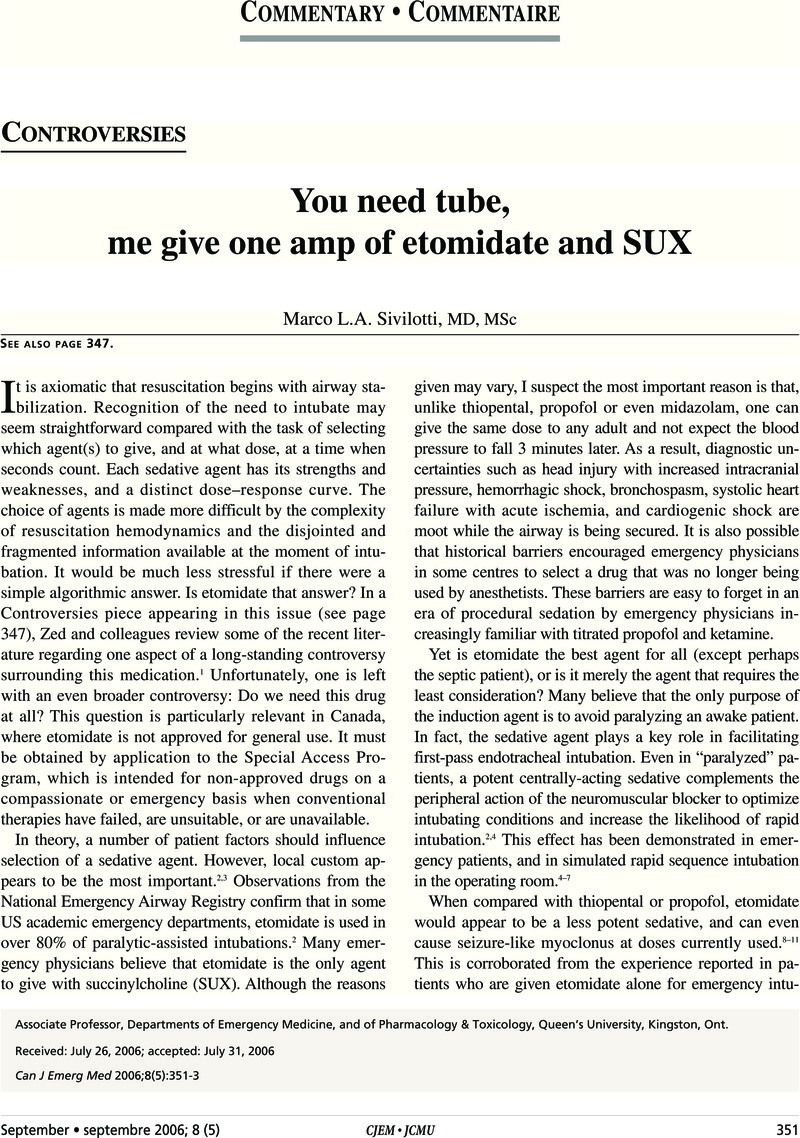Crossref Citations
This article has been cited by the following publications. This list is generated based on data provided by Crossref.
Green, Rob
2007.
Etomidate and RSI: How important is post-intubation hypotension?.
CJEM,
Vol. 9,
Issue. 01,
p.
3.
Sivilotti, Marco L.A.
2007.
Reply.
CJEM,
Vol. 9,
Issue. 01,
p.
3.
Cicero, Michael
and
Graneto, John
2011.
Etomidate for procedural sedation in the elderly: a retrospective comparison between age groups.
The American Journal of Emergency Medicine,
Vol. 29,
Issue. 9,
p.
1111.
Harris, Tim
Davenport, Ross
Hurst, Tom
and
Jones, Jonathan
2012.
Improving outcome in severe trauma: trauma systems and initial management—intubation, ventilation and resuscitation.
Postgraduate Medical Journal,
Vol. 88,
Issue. 1044,
p.
588.
Hinkewich, Chris
and
Green, Robert
2014.
The impact of etomidate on mortality in trauma patients.
Canadian Journal of Anesthesia/Journal canadien d'anesthésie,
Vol. 61,
Issue. 7,
p.
650.
Green, Robert
Hutton, Brian
Lorette, Jason
Bleskie, Dominique
Mclntyre, Lauralyn
and
Fergusson, Dean
2014.
Incidence of postintubation hemodynamic instability associated with emergent intubations performed outside the operating room: a systematic review.
CJEM,
Vol. 16,
Issue. 01,
p.
69.
Green, Robert S.
and
Butler, Michael B.
2016.
Postintubation Hypotension in General Anesthesia.
Journal of Intensive Care Medicine,
Vol. 31,
Issue. 10,
p.
667.



